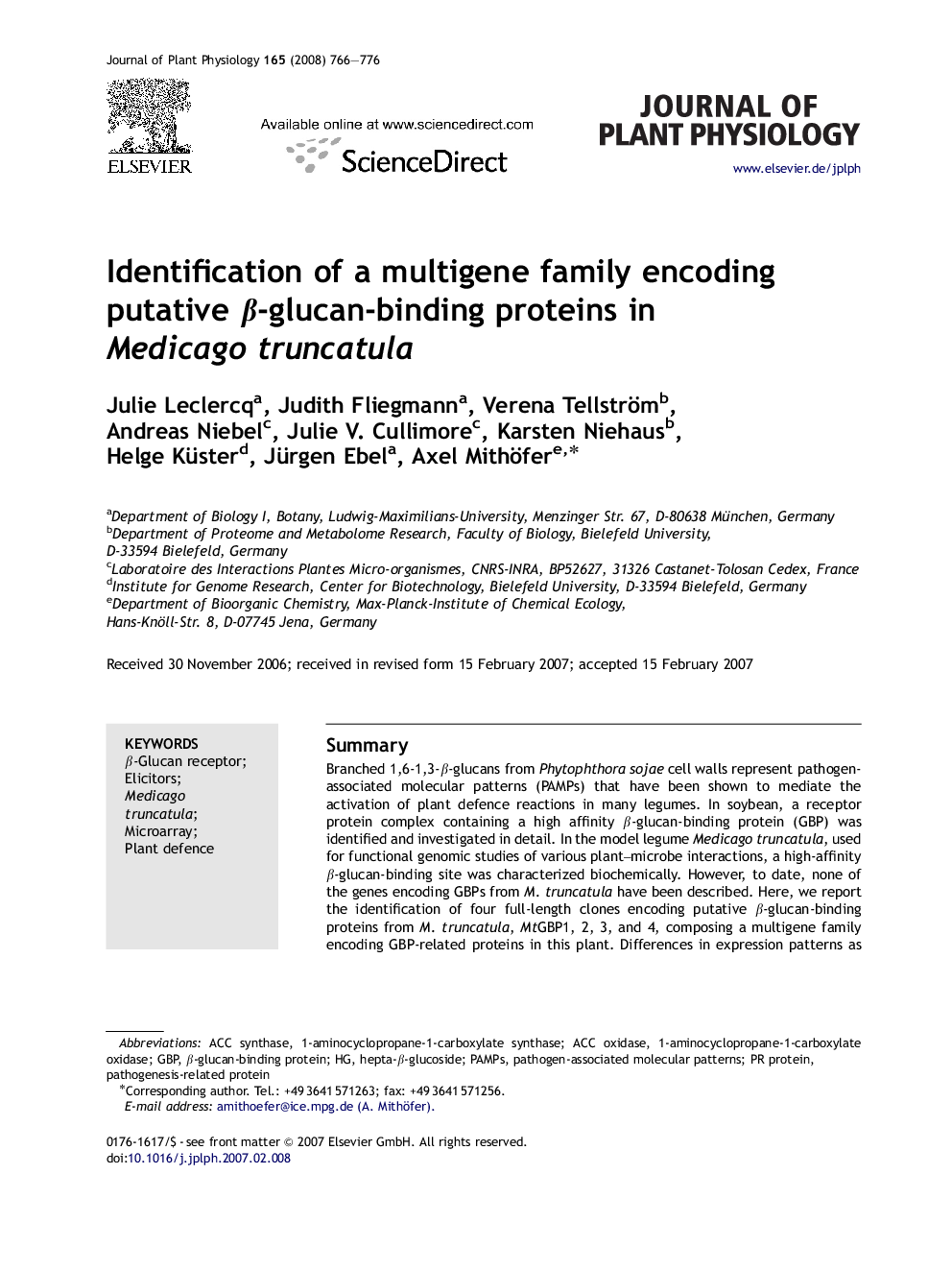| Article ID | Journal | Published Year | Pages | File Type |
|---|---|---|---|---|
| 2057587 | Journal of Plant Physiology | 2008 | 11 Pages |
Abstract
Branched 1,6-1,3-β-glucans from Phytophthora sojae cell walls represent pathogen-associated molecular patterns (PAMPs) that have been shown to mediate the activation of plant defence reactions in many legumes. In soybean, a receptor protein complex containing a high affinity β-glucan-binding protein (GBP) was identified and investigated in detail. In the model legume Medicago truncatula, used for functional genomic studies of various plant-microbe interactions, a high-affinity β-glucan-binding site was characterized biochemically. However, to date, none of the genes encoding GBPs from M. truncatula have been described. Here, we report the identification of four full-length clones encoding putative β-glucan-binding proteins from M. truncatula, MtGBP1, 2, 3, and 4, composing a multigene family encoding GBP-related proteins in this plant. Differences in expression patterns as well as in regulation on treatment with two different biotic elicitors are demonstrated for the members of the GBP family and for a selection of defence-related genes.
Keywords
Related Topics
Life Sciences
Agricultural and Biological Sciences
Agronomy and Crop Science
Authors
Julie Leclercq, Judith Fliegmann, Verena Tellström, Andreas Niebel, Julie V. Cullimore, Karsten Niehaus, Helge Küster, Jürgen Ebel, Axel Mithöfer,
